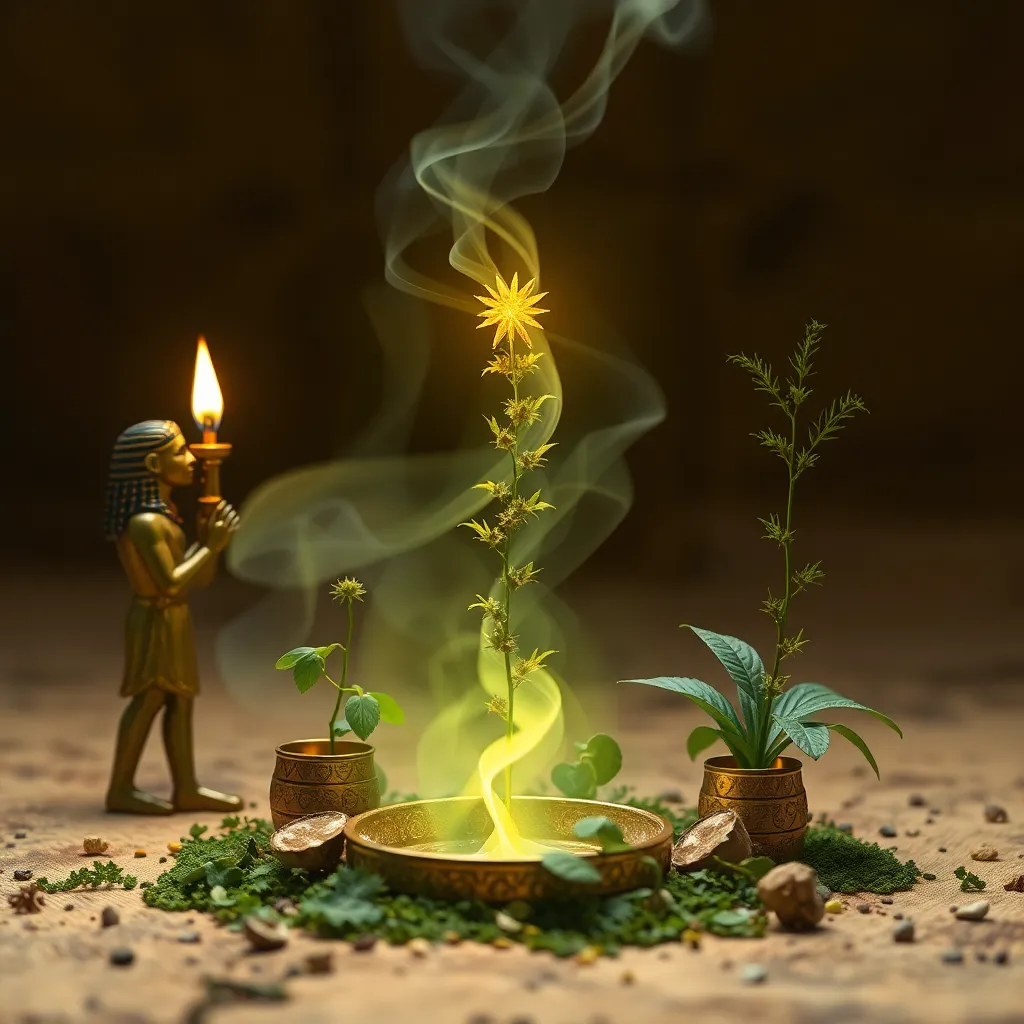The Connection Between Sacred Herbs and Egyptian Ceremonies
I. Introduction
In ancient Egyptian culture, herbs held a profound significance that transcended mere culinary use. These sacred plants were integral to spiritual practices, religious rituals, and daily life. The ancient Egyptians believed that herbs not only provided physical sustenance but also connected them to the divine. This article aims to explore the intricate relationship between sacred herbs and ceremonial practices in ancient Egypt, shedding light on their historical context, types, and roles within various rituals.
II. Historical Context of Sacred Herbs in Ancient Egypt
The ancient Egyptians possessed a rich spiritual belief system that encompassed a pantheon of gods and goddesses, each associated with different aspects of life and nature. Herbs were considered gifts from the gods, imbued with magical properties that could heal, protect, and purify. They were a staple in both everyday life and religious ceremonies, highlighting the deep connection between the natural world and the divine.
In daily life, herbs were used for cooking, medicine, and personal care. However, their most profound significance emerged in religious contexts, where they played a crucial role in rituals and offerings to deities. This duality of purpose emphasized the intertwined nature of spirituality and nature in ancient Egyptian culture.
III. Types of Sacred Herbs Used in Egyptian Ceremonies
Several herbs were deemed sacred in ancient Egyptian ceremonies, each carrying its unique cultural and symbolic meanings:
- Frankincense: Known for its aromatic resin, frankincense was used in incense offerings to deities. It symbolized purification and divine presence.
- Myrrh: Often associated with death and the afterlife, myrrh was used in embalming and funerary rituals. It represented healing and protection.
- Blue Lotus: This beautiful flower was revered for its psychoactive properties and was associated with rebirth and spirituality. It often appeared in art and offerings.
- Wormwood: Known for its bitter taste, wormwood was used in rituals to ward off evil spirits and promote protection.
IV. The Role of Herbs in Rituals and Offerings
Herbs played a central role in various rituals, particularly in funerary practices and offerings made to the gods. In funerary rituals, sacred herbs were utilized to prepare the deceased for the afterlife. Myrrh and frankincense were essential in the embalming process, believed to preserve the body and protect it from decay.
In temple offerings, priests would burn incense made from these sacred herbs to create a fragrant atmosphere that was pleasing to the gods. The act of offering herbs was seen as a way to communicate with the divine and seek favor, blessings, or guidance.
V. The Therapeutic Properties of Sacred Herbs
Beyond their spiritual significance, many sacred herbs were recognized for their medicinal properties. The ancient Egyptians practiced herbal medicine, employing various plants to treat ailments and promote health. For instance:
- Frankincense was believed to aid in respiratory issues.
- Myrrh was used for its anti-inflammatory and antiseptic properties.
- Blue Lotus was thought to have calming effects and was often used in rituals to induce trance-like states.
This connection between healing practices and spiritual ceremonies illustrates how herbs bridged the gap between the physical and the metaphysical, serving both the body and the soul.
VI. Symbolism of Herbs in Egyptian Art and Literature
Sacred herbs were prominently represented in ancient Egyptian art and literature. Hieroglyphics often depicted these plants, symbolizing their importance in religious and ceremonial contexts. For example, the blue lotus frequently appeared in tomb paintings, symbolizing rebirth and the afterlife.
Moreover, ancient Egyptian texts, such as the Ebers Papyrus, contained references to the uses of herbs in medicine and rituals, highlighting their significance in both practical and spiritual realms. These artistic and literary representations underscore the deep-rooted symbolism of herbs in the Egyptian worldview.
VII. Modern Interpretations and Uses of Sacred Herbs
In contemporary times, there has been a revival of interest in ancient herbal practices, particularly within the fields of herbalism and spirituality. Many modern practitioners draw inspiration from ancient Egyptian traditions, incorporating sacred herbs into rituals, meditation, and healing practices.
The influence of ancient Egyptian herbal traditions can be seen in:
- Modern herbal remedies that utilize frankincense and myrrh for their therapeutic properties.
- The use of blue lotus in spiritual practices to enhance mindfulness and connection to the divine.
VIII. Conclusion
The significance of sacred herbs in Egyptian ceremonies extends far beyond their physical properties; they embody the intersection of spirituality, health, and daily life in ancient Egyptian culture. From their use in rituals and offerings to their therapeutic properties, these herbs played a vital role in connecting the people with their deities and the natural world.
As we reflect on the enduring legacy of these practices, it becomes evident that the reverence for sacred herbs continues to influence modern spirituality and wellness. The ancient Egyptians’ understanding of the power of nature remains relevant today, reminding us of the timeless connection between the earth and the divine.




